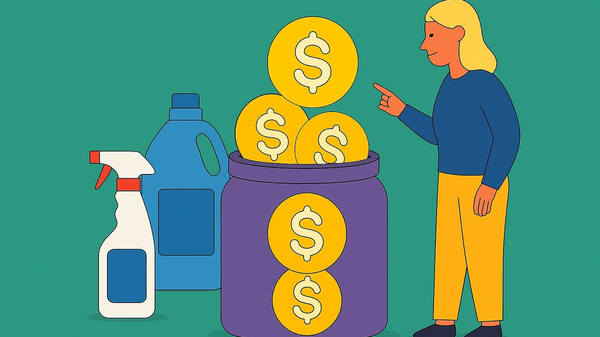Highlights
- How to stay even-keel, even when the market is red
- What smart investors do to turn downturns into profits
- The perspective shift you need to thrive during (and even look forward to) market corrections
“Did you see the market today?!”
My dad always calls and asks this if it’s been an exceptionally good day… or a really bad one.
This was ‘Black Monday’ in August when everything went red.
“Yes, and I’m PISSED!” I huffed.
“Not because it’s down - but because I’m missing out on buying the dip since it’s a holiday in Canada and the market is closed!”
“I knew you’d say that,” my dad said. “That’s the right attitude!”
Friends, it’s been a journey getting to the point.
I used to go into a tailspin on days like this. Just look at the headlines from that Monday:
If this stresses you out, it’s totally normal.
I’ve been investing for decades, and it’s only been in the last couple years that I’ve gotten to the point where I can appreciate the ‘down days’ and see them for what they really are: an opportunity.
Riding out the ups and downs of the market is truly a mental game.
Talking yourself through the dips is one of the best ways to build resilience, ease stress, and get through (without having a meltdown).
Here are 5 of my favourite things to tell myself to get through bad days on the market:
“What a great sale!”
Who doesn’t love a good sale?!
Instead of freaking out about where my investments are at, I now focus on the opportunities.
My S&P 500 ETF is on sale for $5 less than it was last week? Come to mama!
Because I’m a passive investor buying index funds, I expect they’ll bounce back sooner or later. May as well get ‘em while they’re cheap!
Which leads me to my next point…
“Millionaires are made during downturns”
Of course we all love heady days when our funds hit all-time record highs.
(And there’s been quite a few of those days this year!)
But counterintuitively, millionaires are made when things are low.
Jaspreet Singh calls it “POOP”...
AKA, “Panic, Overselling, Opportunity, Profits”
While some people panic and sell, future millionaires spot the opportunity and snap up funds at a discount - leading to profit once the market recovers.
“Headlines are just marketing”
The news is not investment advice.
With a good passive investment strategy, you don’t need to (and shouldn’t) follow “hot tips” in a news article, interview, or broadcast.
I’ve worked in marketing for much of my career, and the goal of all this is to get attention.
And NOTHING works better than a scary, dramatic headline that predicts doom and gloom.
Media outlets need your attention so they can serve up ads - and they are masters at it.
People who take investment advice from the news end up on the wrong side of the “POOP” cycle, and find themselves panicking and overselling.
Just stick to your passive investing plan, and eventually you’ll come out the other side and reap the benefits.
As Warren Buffet (one of the most successful investors of all time) says, “Don't watch the market closely.”
According to Warren, us passive investors can keep doing what we’re doing:
“Zoom out and see the big picture”
If you look at a fund’s chart for just a day or a month, it might not look pretty.
But the magic happens when you zoom out and get perspective.
Here’s the chart for VFV.TO, an ETF that tracks the S&P 500.
The 1 month chart looks a bit iffy… but when you look at it over 5 years, you can see the sure and upward trend.
Just like how we don’t make decisions based on the news, we don’t get caught up in the short-term performance of index ETFs.
“This is totally normal and expected”
Red days (weeks, months, even years) are all part of a normal stock market cycle.
It’s easier to deal with things when we know it’s all part of the journey.
We don’t know exactly when corrections will happen, just that they will happen.
(And as we discussed earlier, we now see them as opportunities instead of a reason to freak out)
On average, the S&P 500 has experienced:
- A correction every 2 years (10%+)
- A bear market every 7 years (20%+)
- A crash once every 12 years (30%+)
Nature runs its course, even in the stock market. It can’t always be spring - fall and winter happen too.
These tips apply only to buy-and-hold investors…
If you’re investing in individual stocks, it’s a different story.
You need to be a lot more “on the ball” and pay attention to speculation.
We (along with ‘the oracle of Omaha’ Warren Buffet) recommend passive investing so you can sit back and invest without stress.
Plus, Passiv makes investing easy since it automatically calculates what to buy to stay on track with your targets. Click here to check out the ‘forever free’ plan!


